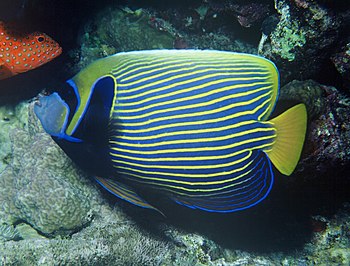 |
| Pseudoepiplatys - Photo by Joel Carnat |
One may wonder why the evolution and nature have favored some fishes to live in temporary pools. Fishes are strictly aquatic. Water in any temporary pools will dry soon and once the water dries, the killifishes live in them will definitely die.
Many scientists would have wondered about the unique choice or preference of the killifishes to live in temporary creeks or pools. Whatever be the science, it has a management message for the corporate world. Perhaps, nature would have created killifishes, may be to educate the corporate people about what kind of leadership style they must practice and follow.
The killifishes are really smart. Better than anyone, they know where they live and the risk of water getting dried soon in the temporary pools. Before the water getting dried off, the killifishes lay their eggs in the water. The interesting point is that unlike the eggs of other fishes, the eggs of killifishes can withstand dry environment without getting desiccated. Like the seeds of many plants, the eggs remain dormant when water is not there in the pool. With the onset of the arrival of water during the next rainy season, the eggs hatch out and again the temporary pond will be filled with Killifishes.
The newly born killifishes eat insects and other water creatures in the pool and before the water dries off, lay eggs and the same 'legacy and saga' would continue without any aberration.
The management message to be learned is that the success is not what one achieve for oneself alone but what one ensures and empower others also to achieve. In corporate, the leaders should develop more leaders. One being an extraordinary leader is not enough but they should make many others also as extraordinary leaders.
How the killifishes lay eggs before they die, the corporate leaders must develop leaders to lead and leaders to make many more leaders even after they leave the organization. Once this management lesson is learned by the corporate from the Killifishes, the limitation becomes an opportunity and opportunity become a success.
Because of the above leadership quality only, it appears, the killifishes have evolved to live in temporary pools. The state of 'temporary' or state of 'permanence' has nothing to do with achievements. Winners never believe in such philosophy as well.
Author of a management book - Jungle wisdom for corporate management by Swami Sukhabodhananda and Dr. S Ranganthan |







